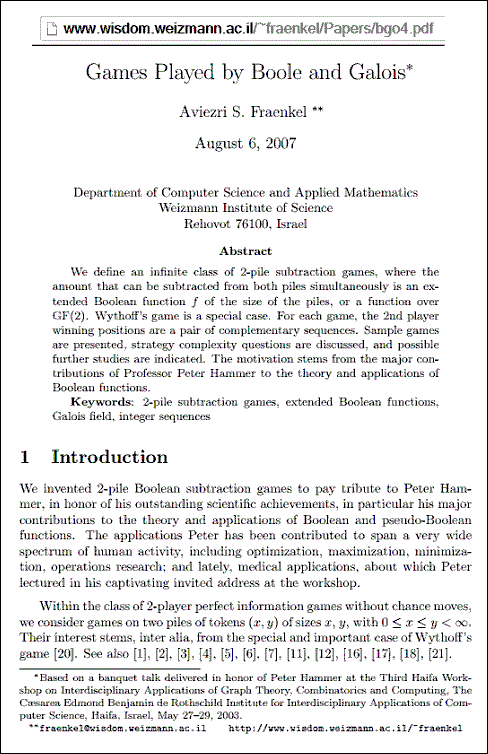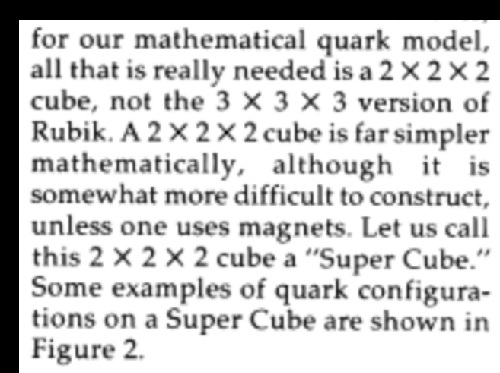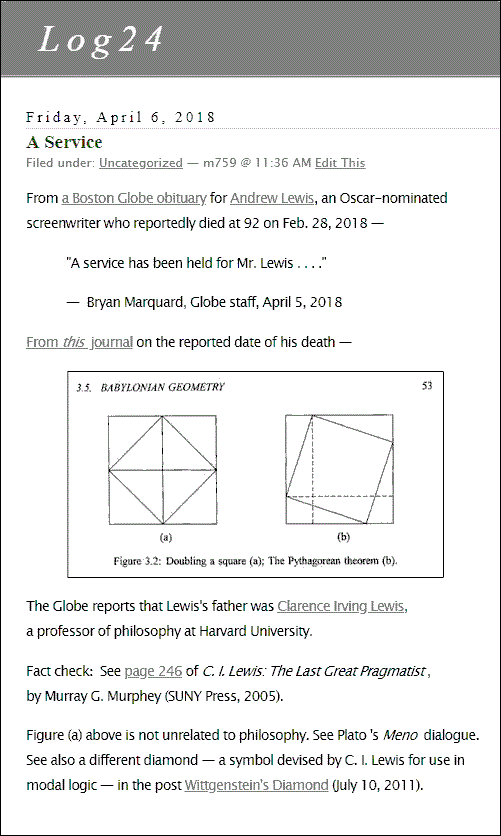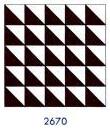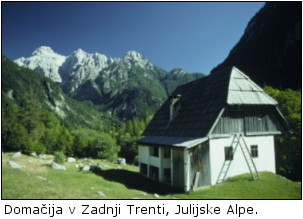Wednesday, March 1, 2023
Geometry for Jews . . .
Friday, July 20, 2018
Geometry for Jews
Click image to enlarge —

A portrait from the home page of David Eppstein,
a professor at the University of California, Irvine
“… how can an image with 8 points and 8 lines
possibly represent a space with 7 points and 7 lines???“
— David Eppstein, 21 December 2015
See ” Projective spaces as ‘collapsed vector spaces,’ ”
page 203 in Geometry and Symmetry by Paul B. Yale,
published by Holden-Day in 1968.
Wednesday, January 13, 2016
Geometry for Jews
(Continued from previous episodes)
Boole and Galois also figure in the mathematics of space —
i.e. , geometry. See Boole + Galois in this journal.
Related material, according to Jung’s notion of synchronicity —
- This journal on the date, August 6, 2007, of the
above paper, and the following day —
posts now tagged Metamorphosis 2007 - This journal on two of the dates of the 2003 Haifa workshop
that the paper mentions in a footnote —
posts now tagged Solomon’s Mental Health Month
Tuesday, September 22, 2015
Geometry for Jews
Remarks by an ignorant professor quoted here
yesterday suggest a Log24 search for "Lost in Translation."
That search yields instances of the following figure:

See also the post Red October (Oct. 2, 2012).
Saturday, August 28, 2021
Solomon’s Super* Cube…
Geometry for Jews continues.
The conclusion of Solomon Golomb's
"Rubik's Cube and Quarks,"
American Scientist , May-June 1982 —
Related geometric meditation —
Archimedes at Hiroshima
in posts tagged Aitchison.
* As opposed to Solomon's Cube .
Wednesday, October 2, 2019
Algebra for Jews
Saturday, July 21, 2018
Wednesday, July 20, 2016
Weather for Jews
"What I'm aiming for are moments of strong sensation —
moments of total physical experience of the landscape,
when weather just reaches out and sucks you in."
— The late Jane Wilson —
See also the previous post and, from the date of Wilson's death,
Sunday, September 27, 2015
Box Office
This suggests the recent link (in the Sept. 22 post Geometry for Jews)
to the post Red October (Oct. 2, 2012). That post mentioned the first
version of Hotel Transylvania.
See also Mary Karr's look at American culture in today's NY Times
Sunday Book Review .
Sunday, May 19, 2013
Sermon
Best vs. Bester
The previous post ended with a reference mentioning Rosenhain.
For a recent application of Rosenhain's work, see
Desargues via Rosenhain (April 1, 2013).
From the next day, April 2, 2013:
"The proof of Desargues' theorem of projective geometry
comes as close as a proof can to the Zen ideal.
It can be summarized in two words: 'I see!' "
– Gian-Carlo Rota in Indiscrete Thoughts (1997)
Also in that book, originally from a review in Advances in Mathematics ,
Vol. 84, Number 1, Nov. 1990, p. 136:

See, too, in the Conway-Sloane book, the Galois tesseract …
and, in this journal, Geometry for Jews and The Deceivers , by Bester.
Sunday, June 26, 2011
Paradigms Lost
Continued from March 10, 2011 — A post that says
"If Galois geometry is thought of as a paradigm shift
from Euclidean geometry, both… the Kuhn cover
and the nine-point affine plane may be viewed…
as illustrating the shift."
Yesterday's posts The Fano Entity and Theology for Antichristmas,
together with this morning's New York Times obituaries (below)—
—suggest a Sunday School review from last year's
Devil's Night (October 30-31, 2010)—
|
Sunday, October 31, 2010 ART WARS – m759 @ 2:00 AM … There is a Cave – Paradise Lost , by John Milton
|
See also Ash Wednesday Surprise and Geometry for Jews.
Thursday, June 11, 2009
Thursday June 11, 2009
Geometry for Jews
(continued from Michelangelo’s birthday, 2003)
“Discuss the geometry underlying the above picture.”
Abstraction and the Holocaust (Mark Godfrey, Yale University Press, 2007) describes one approach to such a discussion: Bochner “took a photograph of a new arrangement of blocks, cut it up, reprinted it as a negative, and arranged the four corners in every possible configuration using the serial principles of rotation and reversal to make Sixteen Isomorphs (Negative) of 1967, which he later illustrated alongside works by Donald Judd, Sol LeWitt and Eva Hesse in his Artforum article ‘The Serial Attitude.’ [December 1967, pp. 28-33]” Bochner’s picture of “every possible configuration”–
Compare with the 24 figures in Frame Tales
(Log24, Nov. 10, 2008) and in Theme and Variations.
Sunday, November 16, 2008
Sunday November 16, 2008
continued
From Koestler’s Darkness at Noon, a fictional Communist on propaganda:
“It is necessary to hammer every sentence into the masses by repetition and simplification. What is presented as right must shine like gold; what is presented as wrong must be black as pitch.”
Thanks for this quotation to Kati Marton, author of The Great Escape: Nine Jews Who Fled Hitler and Changed the World (Simon & Schuster, paperback edition Nov. 6, 2007). One of Marton’s nine was Koestler.

From another book related to this exodus:
“Riesz was one of the most elegant mathematical writers in the world, known for his precise, concise, and clear expositions. He was one of the originators of the theory of function spaces– an analysis which is geometrical in nature.”
— Stanislaw Ulam, Adventures of a Mathematician
And from Gian-Carlo Rota, a friend of Ulam:
“Riesz’s example is well worth following today.”
Related material: Misunderstanding in the Theory of Design and Geometry for Jews.
For a different approach to ethnicity and the number nine that is also “geometrical in nature,” see The Pope in Plato’s Cave and the four entries preceding it, as well as A Study in Art Education.
Wednesday, March 5, 2008
Wednesday March 5, 2008
For CENTRAL
Central Intelligence:
"God does not play dice."
— Paraphrase of a remark
by Albert Einstein
Another Nobel Prize winner,
Isaac Bashevis Singer—
"a God who speaks in deeds,
not in words, and whose
vocabulary is the Cosmos"
From "The Escapist:
The Reality of Fantasy Games"–

Dungeons & Dragons Dice
From today's New York Times:
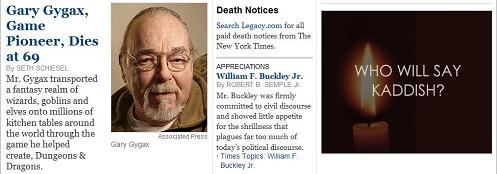
A Kaddish for Gygax:
| "I was reading Durant's section on Plato, struggling to understand his theory of the ideal Forms that lay in inviolable perfection out beyond the phantasmagoria. (That was the first, and I think the last, time that I encountered that word.)" |
Related material:
For more on the word
"phantasmagoria," see
Log24 on Dec. 12, 2004
and on Sept. 23, 2006.
For phantasmagoria in action,
see Dungeons & Dragons
and Singer's (and others')
Jewish fiction.
For non-phantasmagoria,
see (for instance) the Elements
of Euclid, which culminates
in the construction of the
Platonic solids illustrated above.
See also Geometry for Jews.
Wednesday, September 12, 2007
Wednesday September 12, 2007


Thursday, June 14, 2007
Thursday June 14, 2007
"Kurt Waldheim, the former United Nations Secretary General and President of Austria whose hidden ties to Nazi organizations and war crimes was [sic] exposed late in his career, died today at his home in Vienna. He was 88." —The New York Times this afternoon
From a story by
Leonard Michaels
linked to on
Aaron Sorkin's
birthday, June 9:
It has been said that the unexamined life isn't worth living. Nachman wasn't against examining his life, but then what was a life? ….
Internet user signed
"George Polya"–
"Steven Cullinane is a Liar."
3. L'Affaire Dharwadker continues
(May 31, 2007)

Friday, January 19, 2007
Friday January 19, 2007
Twisted Honeycomb
From a review in today’s New York Times by Janet Maslin of Norman Mailer’s new novel, The Castle in the Forest:
“The wise beekeeper does not wear dark clothing, lest it pick up light-colored pollen. Italian bees are gentler and more chic than the Austrian variety. The mating box, capping fork and spur-wheel embedder are essential tools for apiculture. And all power in the beehive rests with a treacherous but fragrant bitch.
All this bee talk crops up in ‘The Castle in the Forest,’ Norman Mailer’s zzzzz-filled new novel about Adolf Hitler’s tender, metaphor-fraught and (in this book’s view) literally bedeviled boyhood. So it is not a stretch for the book’s jacket copy to insist that ‘now, on the eve of his 84th birthday, Norman Mailer may well be saying more than he ever has before.’ More about beekeeping– absolutely.”
Friday, August 4, 2006
Friday August 4, 2006
ART WARS
Continued from
Nov. 25, 2005
From today’s New York Times:
A review of a current Manhattan art exhibition—
“It begins with a juxtaposition of early body-oriented videos by Mr. Nauman and Paul McCarthy, who, quickly following Mr. Nauman’s lead, was in his studio in Los Angeles videotaping home-alone performance pieces by 1970. The contrast is pure Apollo-versus-Dionysus.”
More on Paul McCarthy from artandculture.com:
“If you walk into a room and find everything you held dear in childhood degraded, chances are it’s a Paul McCarthy installation. McCarthy is known for shocking, sexually charged pieces that feature benign cartoon and pop-culture characters — Olive Oyl and Santa Claus, among others — in a bacchanalia of blood and feces.
The 1974 video ‘Hot Dog’ shoots to the heart of the adolescent ‘gross-out’ as McCarthy tapes his penis into a hot dog bun, then packs his pie hole full of franks and wraps himself in gauze. Another piece from the 70s called ‘Sailor’s Meat’ finds the artist dressed as a blonde hooker smeared with blood and ‘knowing’ a pile of raw meat….
Critics often compare his work with that of the Viennese Actionists whose performances were also characterized by gore, raw sexuality, and abused food.”

Related material:
The Wiener Kreis in
yesterday’s 1:06 PM entry
and the five entries
ending the afternoon of
Nov. 25, 2005.
For an approach to art
more in the spirit of Apollo
than of Dionysus, see
Geometry for Jews.
Friday, June 24, 2005
Friday June 24, 2005
continued:

to bridge the gap
between themselves and God….
No bridge reaches God, except one…
God's Bridge: The Cross
— Billy Graham Evangelistic Association,
according to messiahpage.com
"… just as God defeats the devil:
this bridge exists;
it is the theory of the field
of algebraic functions over
a finite field of constants
(that is to say, a finite number
of elements: also said to be a Galois
field, or earlier 'Galois imaginaries'
because Galois first defined them
and studied them….)"
— André Weil, 1940 letter to his sister,
Simone Weil, alias Simone Galois
(see previous entry)
Related material:
Billy Graham and the City:
A Later Look at His Words
— New York Times, June 24, 2005
Sunday, June 12, 2005
Sunday June 12, 2005
continued
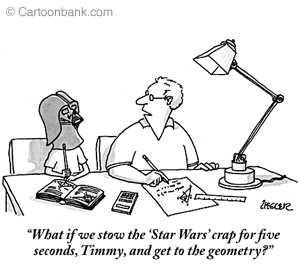
Recommended geometry:
Click on picture to enlarge.
Related material:
Friday, May 27, 2005
Friday May 27, 2005
Part Deux
Wednesday’s entry The Turning discussed a work by Roger Cooke. Cooke presents a
“fanciful story (based on Plato’s dialogue Meno).”
The History of Mathematics is the title of the Cooke book.
Associated Press thought for today:
“History is not, of course, a cookbook offering pretested recipes. It teaches by analogy, not by maxims. It can illuminate the consequences of actions in comparable situations, yet each generation must discover for itself what situations are in fact comparable.”
— Henry Kissinger (whose birthday is today)
a link to Geometry for Jews.
This link suggests a search for material
on the art of Sol LeWitt, which leads to
an article by Barry Cipra,
The “Sol LeWitt” Puzzle:
A Problem in 16 Squares (ps),
a discussion of a 4×4 array
of square linear designs.
Cipra says that
* Jean-Paul Sartre,
Being and Nothingness,
Philosophical Library, 1956
[reference by Cipra]
For another famous group lurking near, if not within, a 4×4 array, click on Kissinger’s birthday link above.
Kissinger’s remark (above) on analogy suggests the following analogy to the previous entry’s (Drama of the Diagonal) figure:

Logos Alogos II:
Horizon
This figure in turn, together with Cipra’s reference to Sartre, suggests the following excerpts (via Amazon.com)–
From Sartre’s Being and Nothingness, translated by Hazel E. Barnes, 1993 Washington Square Press reprint edition:
| 1. | on Page 51: |
| “He makes himself known to himself from the other side of the world and he looks from the horizon toward himself to recover his inner being. Man is ‘a being of distances.'” | |
| 2. | on Page 154: |
| “… impossible, for the for-itself attained by the realization of the Possible will make itself be as for-itself–that is, with another horizon of possibilities. Hence the constant disappointment which accompanies repletion, the famous: ‘Is it only this?’….” | |
| 3. | on Page 155: |
| “… end of the desires. But the possible repletion appears as a non-positional correlate of the non-thetic self-consciousness on the horizon of the glass-in-the-midst-of-the-world.” | |
| 4. | on Page 158: |
| “… it is in time that my possibilities appear on the horizon of the world which they make mine. If, then, human reality is itself apprehended as temporal….” | |
| 5. | on Page 180: |
| “… else time is an illusion and chronology disguises a strictly logical order of deducibility. If the future is pre-outlined on the horizon of the world, this can be only by a being which is its own future; that is, which is to come….” | |
| 6. | on Page 186: |
| “… It appears on the horizon to announce to me what I am from the standpoint of what I shall be.” | |
| 7. | on Page 332: |
| “… the boat or the yacht to be overtaken, and the entire world (spectators, performance, etc.) which is profiled on the horizon. It is on the common ground of this co-existence that the abrupt revelation of my ‘being-unto-death’….” | |
| 8. | on Page 359: |
| “… eyes as objects which manifest the look. The Other can not even be the object aimed at emptily at the horizon of my being for the Other.” | |
| 9. | on Page 392: |
| “… defending and against which he was leaning as against a wail, suddenly opens fan-wise and becomes the foreground, the welcoming horizon toward which he is fleeing for refuge.” | |
| 10. | on Page 502: |
| “… desires her in so far as this sleep appears on the ground of consciousness. Consciousness therefore remains always at the horizon of the desired body; it makes the meaning and the unity of the body.” |
| 11. | on Page 506: |
| “… itself body in order to appropriate the Other’s body apprehended as an organic totality in situation with consciousness on the horizon— what then is the meaning of desire?” | |
| 12. | on Page 661: |
| “I was already outlining an interpretation of his reply; I transported myself already to the four corners of the horizon, ready to return from there to Pierre in order to understand him.” | |
| 13. | on Page 754: |
| “Thus to the extent that I appear to myself as creating objects by the sole relation of appropriation, these objects are myself. The pen and the pipe, the clothing, the desk, the house– are myself. The totality of my possessions reflects the totality of my being. I am what I have. It is I myself which I touch in this cup, in this trinket. This mountain which I climb is myself to the extent that I conquer it; and when I am at its summit, which I have ‘achieved’ at the cost of this same effort, when I attain this magnificent view of the valley and the surrounding peaks, then I am the view; the panorama is myself dilated to the horizon, for it exists only through me, only for me.” |
|
Illustration of the
last horizon remark: |
For more on the horizon, being, and nothingness, see
Thursday, January 27, 2005
Thursday January 27, 2005
Da Capo
You say I am repeating
Something I have said before. I shall say it again.
Shall I say it again?

|
Sunday, January 16, 2005
Sunday January 16, 2005
Thursday, August 12, 2004
Thursday August 12, 2004
Battle of Gods and Giants,
Part III:
The Invisible Made Visible
"Leon Golub, an American painter of expressionistic, heroic-scale figures that reflect dire modern political conditions, died on Sunday in Manhattan. He was 82….
In the 1960's he produced a series, called 'Gigantomachies,' of battling, wrestling figures. They were based on classical models, including the Hellenistic Altar of Pergamon. But there was nothing idealized about them."
The Hellenistic Altar of Pergamon,
from Battle of Gods and Giants:
Golub's New York Times obituary concludes with a quote from a 1991 interview:
"Asked about his continuing and future goal he said, 'To head into real!'"
From Tuesday's Battle of Gods and Giants:
This sort of mathematics illustrates the invisible "form" or "idea" behind the visible two-color pattern. Hence it exemplifies, in a way, the conflict described by Plato between those who say that "real existence belongs only to that which can be handled" and those who say that "true reality consists in certain intelligible and bodiless forms."
Perhaps, if Golub is fortunate enough to escape from the afterlife version of Plato's Cave, he will also be fortunate enough to enter Purgatory, where there awaits a course in reality, in the form of…
Sunday, September 14, 2003
Sunday September 14, 2003
Skewed Mirrors
Readings on Aesthetics for the
Feast of the Triumph of the Cross
Part I —
Bill Moyers and Julie Taymor
Director Taymor on her own passion play (see previous entry), “Frida“:
“We always write stories of tragedies because that’s how we reach our human depth. How we get to the other side of it. We look at the cruelty, the darkness and horrific events that happened in our life whether it be a miscarriage or a husband who is not faithful. Then you find this ability to transcend. And that is called the passion, like the passion of Christ. You could call this the passion of Frida Kahlo, in a way.”
— 10/25/02 interview with Bill Moyers
|
From transcript MOYERS: What happened to you in Indonesia. TAYMOR: This is probably it for me. This is the story that moves me the most…. I went to Bali to a remote village by a volcanic mountain on the lake. They were having a ceremony that only happens only every 10 years for the young men. I wanted to be alone. I was listening to this music and all of a sudden out of the darkness I could see glints of mirrors and 30 or 40 old men in full warrior costume– there was nobody in this village square. I was alone. They couldn’t see me in the shadows. They came out with these spears and they started to dance. They did, I don’t know, it felt like an eternity but probably a half hour dance. With these voices coming out of them. And they danced to nobody. Right after that, they and I went oh, my God. The first man came out and they were performing for God. Now God can mean whatever you want it to mean. But for me, I understood it so totally. The detail on the costumes. They didn’t care if someone was paying tickets, writing reviews. They didn’t care if an audience was watching. They did it from the inside to the outside. And from the outside to the in. And that profoundly moved me then. MOYERS: How did you see the world differently after you were in Indonesia? |
From transcript ….They did it from the inside to the outside. And from the outside to the in. And that profoundly moved me then. It was…it was the most important thing that I ever experienced. … ………………….. MOYERS: Now that you are so popular, now that your work is… TAYMOR: [INAUDIBLE]. MOYERS: No, I’m serious. Now that you’re popular, now that your work is celebrated and people are seeking you, do you feel your creativity is threatened by that popularity or liberated by it? TAYMOR: No, I think it’s neither one. I don’t do things any differently now than I would before. And you think that sometimes perhaps if I get a bigger budget for a movie, then it will just be the same thing… MOYERS: Ruination. Ruination. TAYMOR: No, because LION KING is a combination of high tech and low tech. There are things up on that stage that cost 30 cents, like a little shadow puppet and a lamp, and it couldn’t be any better than that. It just couldn’t. Sometimes you are forced to become more creative because you have limitations. …. |
|
TAYMOR: Well I understood really the power of art to transform. I think transformation become the main word in my life. Transformation because you don’t want to just put a mirror in front of people and say, here, look at yourself. What do you see? You want to have a skewed mirror. You want a mirror that says you didn’t know you could see the back of your head. You didn’t know that you could amount cubistic see almost all the same aspects at the same time. It allows human beings to step out of their lives and to revisit it and maybe find something different about it. |
It’s not about the technology. It’s about the power of art to transform. I think transformation becomes the main word in my life, transformation. Because you don’t want to just put a mirror in front of people and say, here, look at yourself. What do you see? You want to have a skewed mirror. You want a mirror that says, you didn’t know you could see the back of your head. You didn’t know that you could…almost cubistic, see all aspects at the same time. And what that does for human beings is it allows them to step out of their lives and to revisit it and maybe find something different about it. |
Part II —
Inside and Outside: Transformation
(Research note, July 11, 1986)
 |
Click on the above typewritten note to enlarge.
Summary of
Parts I and II:
See also
Geometry for Jews.
“We’re not here to stick a mirror on you. Anybody can do that, We’re here to give you a more cubist or skewed mirror, where you get to see yourself with fresh eyes. That’s what an artist does. When you paint the Crucifixion, you’re not painting an exact reproduction.”
— Julie Taymor on “Frida” (AP, 10/22/02)
“She made ‘real’ an oxymoron,
she made mirrors, she made smoke.
She had a curve ball
that wouldn’t quit,
a girlfriend for a joke.”
— “Arizona Star,” Guy Clark / Rich Alves
Monday, August 18, 2003
Monday August 18, 2003
Entries since Xanga’s
August 10 Failure:
Sunday, August 17, 2003 2:00 PM
A Thorny Crown of…

From the first episode of
the television series
“The West Wing“:
|
Original airdate: Sept. 22, 1999 MARY MARSH CALDWELL MARY MARSH JOSH TOBY [A stunned silence. Everyone stares at Toby.] TOBY (CONT.) JOSH |
Going There, Part I
|
Crown of Ideas Kirk Varnedoe, 57, art historian and former curator of the Museum of Modern Art, died Thursday, August 14, 2003. From his New York Times obituary: ” ‘He loved life in its most tangible forms, and so for him art was as physical and pleasurable as being knocked down by a wave,’ said Adam Gopnik, the writer and a former student of his who collaborated on Mr. Varnedoe’s first big show at the Modern, ‘High & Low.’ ‘Art was always material first — it was never, ever bound by a thorny crown of ideas.’ ” For a mini-exhibit of ideas in honor of Varnedoe, see Verlyn Klinkenborg on Varnedoe: “I was always struck by the tangibility of the words he used…. It was as if he were laying words down on the table one by one as he used them, like brushes in an artist’s studio. That was why students crowded into his classes and why the National Gallery of Art had overflow audiences for his Mellon Lectures earlier this year. Something synaptic happened when you listened to Kirk Varnedoe, and, remarkably, something synaptic happened when he listened to you. You never knew what you might discover together.” Perhaps even a “thorny crown of ideas“?
“Crown of Thorns” Varnedoe’s death coincided with “To what extent does this idea of a civic life produced by sense of adversity correspond to actual life in Brasília? I wonder if it is something which the city actually cultivates. Consider, for example the cathedral, on the monumental axis, a circular, concrete framed building whose sixteen ribs are both structural and symbolic, making a structure that reads unambiguously as a crown of thorns; other symbolic elements include the subterranean entrance, the visitor passing through a subterranean passage before emerging in the light of the body of the cathedral. And it is light, shockingly so….” — Modernist Civic Space: The Case of Brasilia, by Richard J. Williams, Department of History of Art, University of Edinburgh, Scotland |
Going There, Part II
|
Simple, Bold, Clear Art historian Kirk Varnedoe was, of course, not the only one to die on the day of the Great Blackout. Claude Martel, 34, a senior art director of The New York Times Magazine, also died on Thursday, August 14, 2003. Janet Froelich, the magazine’s art director, describes below a sample of work that she and Martel did together: “A new world of ideas” Froelich notes that “the elements are simple, bold, and clear.” For another example of elements with these qualities, see my journal entry The flag design in that entry
Note that the elements of the flag design have the qualities described so aptly by Froelich– simplicity, boldness, clarity:
They share these qualities with the Elements of Euclid, a treatise on geometrical ideas. For the manner in which such concepts might serve as, in Gopnik’s memorable phrase, a “thorny crown of ideas,” see “Geometry for Jews” in ART WARS: Geometry as Conceptual Art. See also the discussion of ideas in my journal entry on theology and art titled Understanding: On Death and Truth and the discussion of the word “idea” (as well as the word, and the concept, “Aryan”) in the following classic (introduced by poet W. H. Auden):
|
Saturday, August 16, 2003 6:00 AM
Varnedoe’s Crown
Kirk Varnedoe, 57, art historian and former curator of the Museum of Modern Art, died Thursday, August 14, 2003.
From his New York Times obituary:
” ‘He loved life in its most tangible forms, and so for him art was as physical and pleasurable as being knocked down by a wave,’ said Adam Gopnik, the writer and a former student of his who collaborated on Mr. Varnedoe’s first big show at the Modern, ‘High & Low.’ ‘Art was always material first — it was never, ever bound by a thorny crown of ideas.’ “
For a mini-exhibit of ideas in honor of Varnedoe, see
Verlyn Klinkenborg on Varnedoe:
“I was always struck by the tangibility of the words he used…. It was as if he were laying words down on the table one by one as he used them, like brushes in an artist’s studio. That was why students crowded into his classes and why the National Gallery of Art had overflow audiences for his Mellon Lectures earlier this year. Something synaptic happened when you listened to Kirk Varnedoe, and, remarkably, something synaptic happened when he listened to you. You never knew what you might discover together.”
Perhaps even a “thorny crown of ideas”?
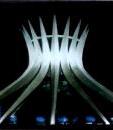
“Crown of Thorns”
Cathedral, Brasilia
Varnedoe’s death coincided with
the Great Blackout of 2003.
“To what extent does this idea of a civic life produced by sense of adversity correspond to actual life in Brasília? I wonder if it is something which the city actually cultivates. Consider, for example the cathedral, on the monumental axis, a circular, concrete framed building whose sixteen ribs are both structural and symbolic, making a structure that reads unambiguously as a crown of thorns; other symbolic elements include the subterranean entrance, the visitor passing through a subterranean passage before emerging in the light of the body of the cathedral. And it is light, shockingly so….”
— Modernist Civic Space: The Case of Brasilia, by Richard J. Williams, Department of History of Art, University of Edinburgh, Scotland
Friday, August 15, 2003 3:30 PM
ART WARS:
The Boys from Brazil
It turns out that the elementary half-square designs used in Diamond Theory

also appear in the work of artist Nicole Sigaud.
Sigaud’s website The ANACOM Project has a page that leads to the artist Athos Bulcão, famous for his work in Brasilia.
From the document
Conceptual Art in an
Authoritarian Political Context:
Brasilia, Brazil,
by Angélica Madeira:
“Athos created unique visual plans, tiles of high poetic significance, icons inseparable from the city.”
As Sigaud notes, two-color diagonally-divided squares play a large part in the art of Bulcão.
The title of Madeira’s article, and the remarks of Anna Chave on the relationship of conceptual/minimalist art to fascist rhetoric (see my May 9, 2003, entries), suggest possible illustrations for a more politicized version of Diamond Theory:
|
Fahne, |

Dr. Mengele, |

Is it safe?
These illustrations were suggested in part by the fact that today is the anniversary of the death of Macbeth, King of Scotland, and in part by the following illustrations from my journal entries of July 13, 2003 comparing a MOMA curator to Lady Macbeth:
|
Die Fahne Hoch, |
|
Thursday, August 14, 2003 3:45 AM
Famous Last Words
The ending of an Aug. 14 Salon.com article on Mel Gibson’s new film, “The Passion”:
” ‘The Passion’ will most likely offer up the familiar puerile, stereotypical view of the evil Jew calling for Jesus’ blood and the clueless Pilate begging him to reconsider. It is a view guaranteed to stir anew the passions of the rabid Christian, and one that will send the Jews scurrying back to the dark corners of history.”
— Christopher Orlet
“Scurrying”?! The ghost of Joseph Goebbels, who famously portrayed Jews as sewer rats doing just that, must be laughing — perhaps along with the ghost of Lady Diana Mosley (née Mitford), who died Monday.
This goes well with a story that Orlet tells at his website:
“… to me, the most genuine last words are those that arise naturally from the moment, such as

Joseph Goebbels |
Voltaire’s response to a request that he foreswear Satan: ‘This is no time to make new enemies.’ ”
For a view of Satan as an old, familiar, acquaintance, see the link to Prince Ombra in my entry last October 29 for Goebbels’s birthday.
Wednesday, August 13, 2003 3:00 PM
Best Picture
For some reflections inspired in part by
- Today’s anniversary of a
1727 Moravian Pentecost, - An April 7, 2003,
lecture at Moravian College, and - St. Bonaventure’s 1259
remarks on the Trinity,
Tuesday, August 12, 2003 4:44 PM
Atonement:
A sequel to my entry “Catholic Tastes” of July 27, 2003.
Some remarks of Wallace Stevens that seem appropriate on this date:
“It may be that one life is a punishment
For another, as the son’s life for the father’s.”
— Esthétique du Mal, Wallace Stevens

“Unless we believe in the hero, what is there
To believe? ….
Devise, devise, and make him of winter’s
Iciest core, a north star, central
In our oblivion, of summer’s
Imagination, the golden rescue:
The bread and wine of the mind….”
— Examination of the Hero in a Time of War, Wallace Stevens
Etymology of “Atonement”:
“Middle English atonen, to be reconciled, from at one, in agreement“
At One
“… We found,
If we found the central evil, the central good….
… we and the diamond globe at last were one.”
— Asides on the Oboe, Wallace Stevens
Tuesday, August 12, 2003 1:52 PM
Franken & ‘Stein,
Attorneys at Law
“Tue August 12, 2003 04:10 AM ET
NEW YORK (Reuters) – Fox News Network is suing humor writer Al Franken for trademark infringement over the phrase ‘fair and balanced’ on the cover of his upcoming book, saying it has been ‘a signature slogan’ of the network since 1996.”
|
Franken: |
‘Stein: |
For answers, click on the pictures
of Franken and ‘Stein.
Sunday, July 13, 2003
Sunday July 13, 2003
ART WARS, 5:09
The Word in the Desert
For Harrison Ford in the desert.
(See previous entry.)
Words strain,
Crack and sometimes break,
under the burden,
Under the tension, slip, slide, perish,
Will not stay still. Shrieking voices
Scolding, mocking, or merely chattering,
Always assail them.
The Word in the desert
Is most attacked by voices of temptation,
The crying shadow in the funeral dance,
The loud lament of
the disconsolate chimera.— T. S. Eliot, Four Quartets
The link to the word "devilish" in the last entry leads to one of my previous journal entries, "A Mass for Lucero," that deals with the devilishness of postmodern philosophy. To hammer this point home, here is an attack on college English departments that begins as follows:
"William Faulkner's Snopes trilogy, which recounts the generation-long rise of the drily loathsome Flem Snopes from clerk in a country store to bank president in Jefferson, Mississippi, teems with analogies to what has happened to English departments over the past thirty years."
For more, see
The Word in the Desert,
by Glenn C. Arbery.
See also the link on the word "contemptible," applied to Jacques Derrida, in my Logos and Logic page.
This leads to an National Review essay on Derrida,
The Philosopher as King,
by Mark Goldblatt.
A reader's comment on my previous entry suggests the film "Scotland, PA" as viewing related to the Derrida/Macbeth link there.
I prefer the following notice of a 7-11 death, that of a powerful art museum curator who would have been well cast as Lady Macbeth:
|
Die Fahne Hoch, |
|
From the Whitney Museum site:
"Max Anderson: When artist Frank Stella first showed this painting at The Museum of Modern Art in 1959, people were baffled by its austerity. Stella responded, 'What you see is what you see. Painting to me is a brush in a bucket and you put it on a surface. There is no other reality for me than that.' He wanted to create work that was methodical, intellectual, and passionless. To some, it seemed to be nothing more than a repudiation of everything that had come before—a rational system devoid of pleasure and personality. But other viewers saw that the black paintings generated an aura of mystery and solemnity.
The title of this work, Die Fahne Hoch, literally means 'The banner raised.' It comes from the marching anthem of the Nazi youth organization. Stella pointed out that the proportions of this canvas are much the same as the large flags displayed by the Nazis.
But the content of the work makes no reference to anything outside of the painting itself. The pattern was deduced from the shape of the canvas—the width of the black bands is determined by the width of the stretcher bars. The white lines that separate the broad bands of black are created by the narrow areas of unpainted canvas. Stella's black paintings greatly influenced the development of Minimalism in the 1960s."
From Play It As It Lays:
She took his hand and held it. "Why are you here."
"Because you and I, we know something. Because we've been out there where nothing is. Because I wanted—you know why."
"Lie down here," she said after a while. "Just go to sleep."
When he lay down beside her the Seconal capsules rolled on the sheet. In the bar across the road somebody punched King of the Road on the jukebox again, and there was an argument outside, and the sound of a bottle breaking. Maria held onto BZ's hand.
"Listen to that," he said. "Try to think about having enough left to break a bottle over it."
"It would be very pretty," Maria said. "Go to sleep."
I smoke old stogies I have found…
Cigar Aficionado on artist Frank Stella:
" 'Frank actually makes the moment. He captures it and helps to define it.'
This was certainly true of Stella's 1958 New York debut. Fresh out of Princeton, he came to New York and rented a former jeweler's shop on Eldridge Street on the Lower East Side. He began using ordinary house paint to paint symmetrical black stripes on canvas. Called the Black Paintings, they are credited with paving the way for the minimal art movement of the 1960s. By the fall of 1959, Dorothy Miller of The Museum of Modern Art had chosen four of the austere pictures for inclusion in a show called Sixteen Americans."
For an even more austere picture, see

For more on art, Derrida, and devilishness, see Deborah Solomon's essay in the New York Times Magazine of Sunday, June 27, 1999:
"Blame Derrida and
his fellow French theorists…."
See, too, my site
Art Wars: Geometry as Conceptual Art.
For those who prefer a more traditional meditation, I recommend
("Behold the Wood of the Cross")
For more on the word "road" in the desert, see my "Dead Poet" entry of Epiphany 2003 (Tao means road) as well as the following scholarly bibliography of road-related cultural artifacts (a surprising number of which involve Harrison Ford):
Sunday, April 27, 2003
Sunday April 27, 2003
ART WARS:
Graphical Password
From a summary of “The Design and Analysis of Graphical Passwords“:
“Results from cognitive science show that people can remember pictures much better than words….
The 5×5 grid creates a good balance between security and memorability.”
— Ian Jermyn, New York University; Alain Mayer, Fabian Monrose, Michael K. Reiter, Bell Labs, Lucent Technologies; Aviel Rubin, AT&T Labs — Research
Illustration — Warren Beatty as
a graphical password:

“Town & Country,”
released April 27, 2001
Those who prefer the simplicity of a 3×3 grid are referred to my entry of Jan. 9, 2003, Balanchine’s Birthday. For material related to the “Town & Country” theme and to Balanchine, see Leadbelly Under the Volcano (Jan. 27, 2003). (“Sometimes I live in the country, sometimes I live in town…” – Huddie Ledbetter). Those with more sophisticated tastes may prefer the work of Stephen Ledbetter on Gershwin’s piano preludes or, in view of Warren Beatty’s architectural work in “Town & Country,” the work of Stephen R. Ledbetter on window architecture.
As noted in Balanchine’s Birthday, Apollo (of the Balanchine ballet) has been associated by an architect with the 3×3, or “ninefold” grid. The reader who wishes a deeper meditation on the number nine, related to the “Town & Country” theme and more suited to the fact that April is Poetry Month, is referred to my note of April 27 two years ago, Nine Gates to the Temple of Poetry.
Intermediate between the simplicity of the 3×3 square and the (apparent) complexity of the 5×5 square, the 4×4 square offers an introduction to geometrical concepts that appears deceptively simple, but is in reality fiendishly complex. See Geometry for Jews. The moral of this megilla?
32 + 42 = 52.
Wednesday, March 19, 2003
Wednesday March 19, 2003
A Look at the Rat
In memory of Herbert Aptheker, theoretician of the American Communist Party, who died on St. Patrick’s Day, 2003 —
From The New Yorker, issue dated March 24, 2003, Louis Menand on Edmund Wilson’s To the Finland Station:
“Wilson did know what was going on in the Soviet Union in the nineteen-thirties, as his pages on Stalin in To the Finland Station make clear. The problem wasn’t with Stalin; the problem was with Lenin, the book’s ideal type of the intellectual as man of action. Wilson admitted that he had relied on publications controlled by the Party for his portrait of Lenin. (Critical accounts were available; for example, the English translation of the émigré Mark Landau-Aldanov’s Lenin was published, by Dutton, in 1922.) Lenin could create an impression of selfless humanitarianism; he was also a savage and ruthless politician—a ‘pail of milk of human kindness with a dead rat at the bottom,’ as Vladimir Nabokov put it to Wilson in 1940, after reading To the Finland Station. In the introduction to the 1972 edition, Wilson provided a look at the rat. He did not go on to explain in that introduction that the most notorious features of Stalin’s regime—the use of terror, the show trials, and the concentration camps—had all been inaugurated by Lenin. To the Finland Station begins with Napoleon’s betrayal of the principles of the French Revolution; it should have ended with Lenin’s betrayal of European socialism.”
From Herbert Aptheker, “More Comments on Howard Fast“:
“We observe that in the list of teachers whom Howard Fast names as most influential in his own life there occur the names of fourteen individuals from Jefferson to Bernard Shaw, Upton Sinclair to Marx, Douglass to Engels, but there is no room for Lenin.
He is, I think, an important teacher, too; indeed, in my view, Lenin is the greatest figure in the whole galaxy of world revolutionary leaders. He is, certainly, the greatest analyzer of and fighter against imperialism.”
For more on Howard Fast, see my entry
“Death Knell” of March 13, 2003.
For a look at the pail of milk, see
the New Yorker cover in Geometry for Jews.
For a more cheerful look at geometry
on this St. Joseph’s Day, see
Harry J. Smith’s
“There is such a thing as a tesseract.”
— A Wrinkle in Time
Thursday, March 13, 2003
Thursday March 13, 2003
Death Knell
In memory of Howard Fast, novelist and Jewish former Communist,
who died yesterday, a quotation:
|
"For many of us, the geometry course sounded the death knell — "Shape and Space in Geometry"
© 1997-2003 Annenberg/CPB. All rights reserved. |
See also
Geometry for Jews.

|
Added March 16, 2003: See, too, the life of |
Thursday March 13, 2003
Birthday Song
Today is the birthday of the late Jewish media magnate and art collector Walter H. Annenberg, whose name appears on a website that includes the following text:
|
“Making quilt blocks is an excellent way to explore symmetry. A quilt block is made of 16 smaller squares. Each small square consists of two triangles. Study this example of a quilt block:
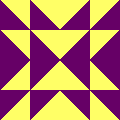 This block has a certain symmetry. The right half is a mirror image of the left, and the top half is a mirror of the bottom.”
© 1997-2003 Annenberg/CPB. All rights reserved. |
Symmetries of patterns such as the above are the subject of my 1976 monograph “ Diamond Theory,” which also deals with “shape and space in geometry,” but in a much more sophisticated way. For more on Annenberg, see my previous entry, “Daimon Theory.” For more on the historical significance of March 13, see Neil Sedaka, who also has a birthday today, in “ Jews in the News.”
Sedaka is, of course, noted for the hit tune “Happy Birthday, Sweet Sixteen,” our site music for today.
See also Geometry for Jews and related entries.
For the phrase “diamond theory” in a religious and philosophical context, see
Pilate, Truth, and Friday the Thirteenth.
“It’s quarter to three….” — Frank Sinatra
Monday, March 10, 2003
Monday March 10, 2003
ART WARS:
Art at the Vanishing Point
Two readings from The New York Times Book Review of Sunday,
2003 are relevant to our recurring "art wars" theme. The essay on Dante by Judith Shulevitz on page 31 recalls his "point at which all times are present." (See my March 7 entry.) On page 12 there is a review of a novel about the alleged "high culture" of the New York art world. The novel is centered on Leo Hertzberg, a fictional Columbia University art historian. From Janet Burroway's review of What I Loved, by Siri Hustvedt:
"…the 'zeros' who inhabit the book… dramatize its speculations about the self…. the spectator who is 'the true vanishing point, the pinprick in the canvas.'''
Here is a canvas by Richard McGuire for April Fools' Day 1995, illustrating such a spectator.

For more on the "vanishing point," or "point at infinity," see
Connoisseurs of ArtSpeak may appreciate Burroway's summary of Hustvedt's prose: "…her real canvas is philosophical, and here she explores the nature of identity in a structure of crystalline complexity."
For another "structure of crystalline
complexity," see my March 6 entry,
For a more honest account of the
New York art scene, see Tom Wolfe's
The Painted Word.
Sunday, March 9, 2003
Sunday March 9, 2003
Symbols —
Broadway:
The Sound of Silence
|
Hello darkness, my old friend. I’ve come to talk with you again. (See previous entry, Mar. 7, “Lovely, Dark and Deep.) |
And the people bowed and prayed to the neon god they made. (See CNN.com Broadway City Arcade club story of Mar. 9) |
The words of the prophets are written on the subway walls. (See picture in NY Times Book Review, Mar. 9, page 31.) |
See also the footnote on the Halmos “tombstone” symbol in the previous entry, the entry “Dustin in Wonderland” of Feb. 24, the film “Marathon Man,” and the entry “Geometry for Jews” of March 6.
Thursday, March 6, 2003
Thursday March 6, 2003
ART WARS:
Geometry for Jews
Today is Michelangelo's birthday.
Those who prefer the Sistine Chapel to the Rothko Chapel may invite their Jewish friends to answer the following essay question:

Discuss the geometry underlying the above picture. How is this geometry related to the work of Jewish artist Sol LeWitt? How is it related to the work of Aryan artist Ernst Witt? How is it related to the Griess "Monster" sporadic simple group whose elements number
808 017 424 794 512 875 886 459 904 961 710 757 005 754 368 000 000 000?
Some background:
-
From Nobel Prize Women in Science, by Sharon Bertsch McGrayne, Second Edition (2001), Joseph Henry Press:
"Storm trooper Ernst Witt, resplendent in the Brownshirt uniform of Hitler's paramilitary, knocked on a Jew's apartment door in 1934. A short, rotund woman opened the door. Emmy Noether smiled, welcomed the young Nazi into her home, and started her underground math class. The Brownshirt was one of her favorite pupils."
-
On this date in 1962, Frank Sinatra recorded "I Gotta Right To Sing The Blues" for Capitol Records. This was his last recording for Capitol. He had already started recording for Reprise Records.
-
Related reading:
- A Beauty Really Bare, by Robert Hughes, and
- The Painted Word, by Tom Wolfe


